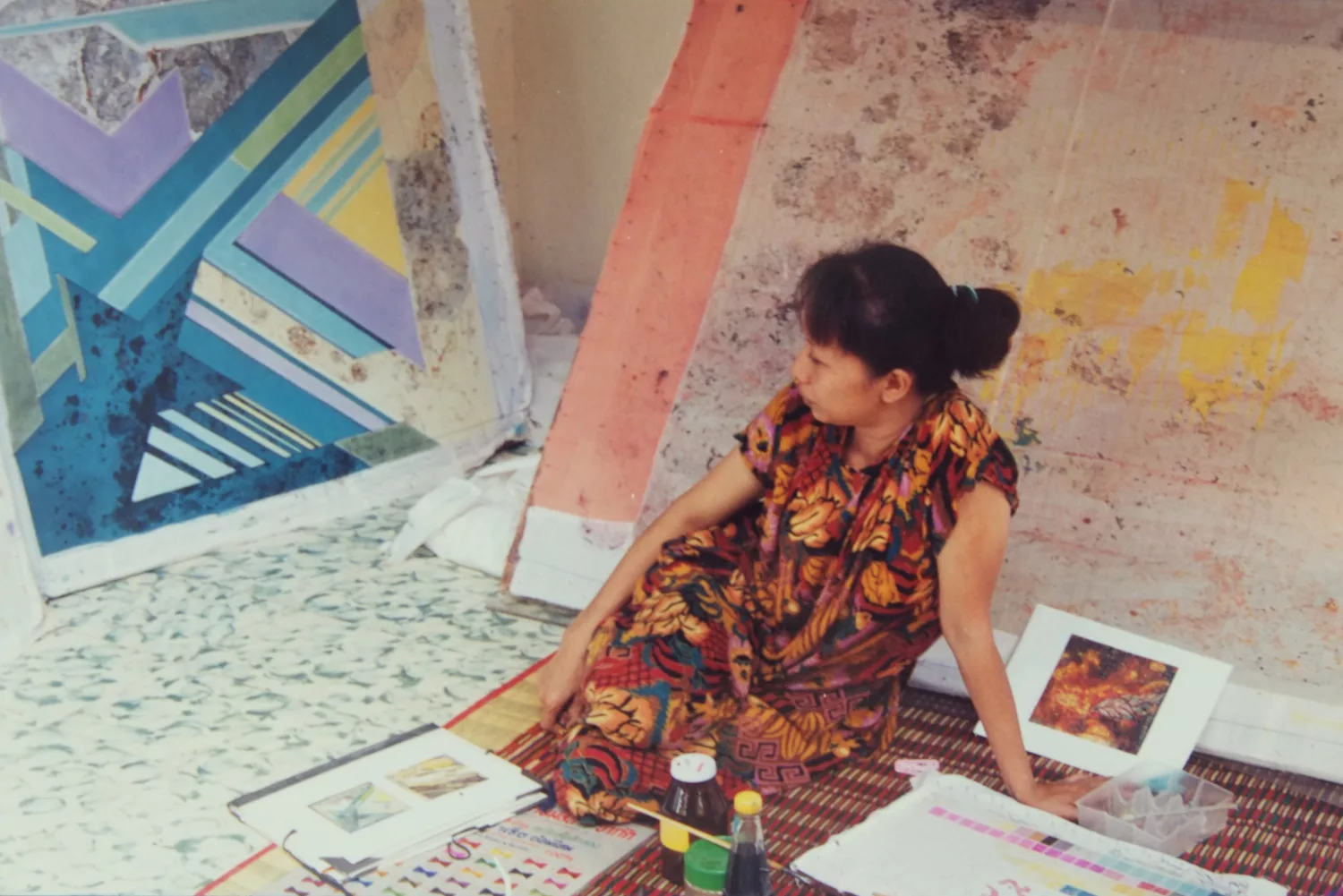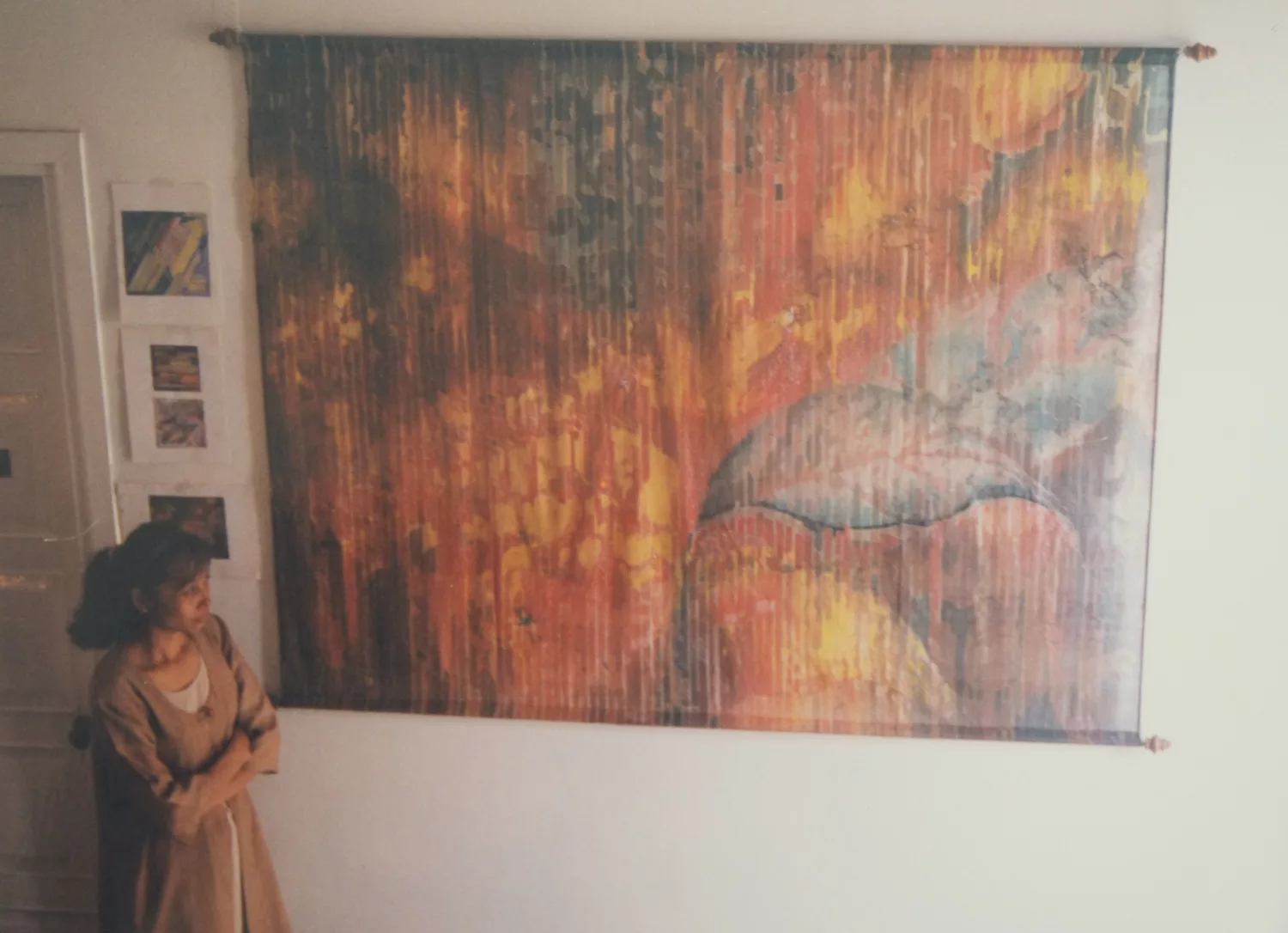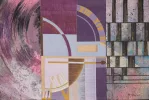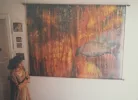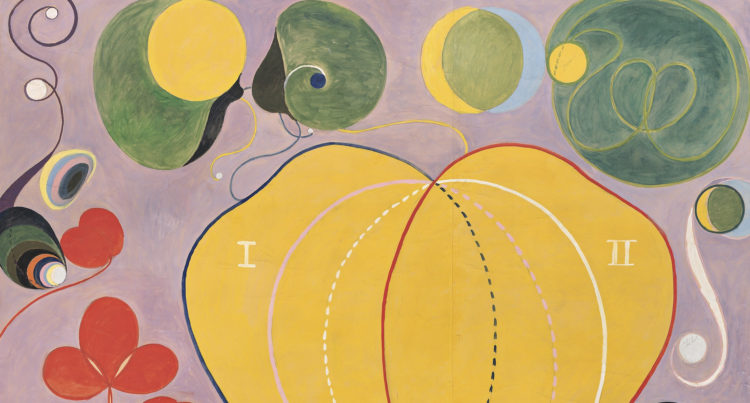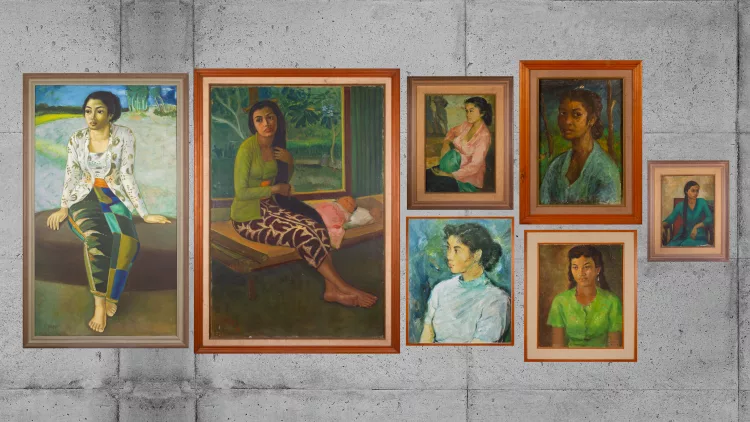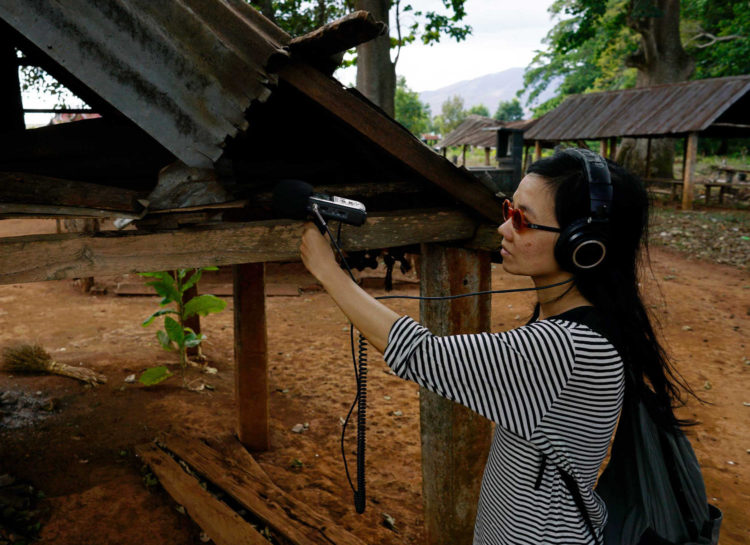Long Sophea
Corey, Pamela N., “The ‘First’ Cambodian Contemporary Artist,” Udaya: Journal of Khmer Studies, no. 12, 2014, p. 61–94
→Nov, Ana, McPhillips, Jody, “Handcrafted Silk Batik Mixes With Traditional Khmer Art,” The Cambodia Daily, 25 October, 2000
→Muan, Ingrid, unpublished article (untitled), c. 1998, Ingrid Muan Archives, box 15, file 61–80, National Museum of Cambodia Library, Phnom Pen
2nd Fukuoka Asian Art Triennale, Fukuoka Asian Art Museum, Fukuoka, 21 March–23 June, 2002
→Batik: Hand Painting on Silk (solo exhibition), Reyum Institute, Phnom Penh, October–December, 2000
→Communication (group exhibition), Situations Gallery (later renamed Reyum Institute), Phnom Penh, December, 1998
Cambodian textile artist.
“I wanted to show the fragility of life…its unpredictability,” said the artist Long Sophea in an interview in the late 1990s. She was a very active and prominent artist in Cambodia during that period, which saw the country’s re-entry into regional and global art networks after decades of isolation due to civil war and genocide.
L. Sophea’s textile artworks are characterised equally by her great technical skill and her delicately poetic sensibility. The Value of Life (1999), for example, is hand-painted on silk using layers of dyes applied over layers of wax, creating a semi-abstract depiction of leaves and organic matter. From a distance, the work is a wash of warm colours; up close, a plethora of infinitesimal details emerge, including lines of varying thicknesses rendered in cooler tones, as well as traces of brushstrokes. The handmade qualities in the batik work become analogous to the organic qualities of nature.
Unusually for the period, The Value of Life – like several other works by L. Sophea –eschews explicit visual references to Cambodia. The repetition of lines and circular forms, however, recalls the codified system of Khmer ornamentation, known as kbach racana, which the artist had studied. L. Sophea explained that the intertwined leaves in the artwork “stand for relationships of all sorts, both human and natural”. (This quote, like the one above, is from an unpublished 1998 interview of the artist by the late art historian and curator Ingrid Muan.)
L. Sophea graduated from the Royal University of Fine Arts in Phnom Penh in 1985, with a diploma in traditional Khmer painting. L. Sophea was also one of the only women amongst a group of around twenty-five Cambodian artists sent for postgraduate study in the former Soviet Union during the 1980s. She studied in Kiev and then Moscow, writing a Master’s dissertation in Russian on aspects of textile arts and Khmer aesthetics, and graduating from the Moscow Institute for the Decorative and Applied Arts in 1992. Her classmates there included students from Cuba, Korea, Nicaragua and Eastern Europe.
During the late 1990s and early 2000s, L. Sophea was the only exhibiting artist in Cambodia working in textiles, and the most prominent amongst very few women exhibiting professionally in the country at the time. She was the only Cambodian woman invited to participate in important exhibitions such as the Fukuoka Asian Art Triennale (2002), alongside contemporaries including Svay Ken (1933–2008) and Prom Sam An, both men.
While in Moscow, L. Sophea maintained an aesthetic connection to Cambodia. A major work made during her studies, Spring (1991), depicts Sovanmacha, a character from the Khmer Ramayana, and was inspired by the artist’s study of the Chaktomuk Conference Hall, designed by Cambodia’s foremost architect, Vann Molyvann (1926–2017). Since around 2005, L. Sophea has not practiced due to family and financial pressures. Her work is held in the collections of Fukuoka Asian Art Museum and National Gallery Singapore.
A biography produced as part of the programme The Flow of History. Southeast Asian Women Artists, in collaboration with Asia Art Archive
© Archives of Women Artists, Research and Exhibitions, 2025






